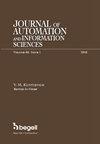具有nesterov加速的多块admm方法
Q3 Engineering
Journal of Automation and Information Sciences
Pub Date : 2021-07-01
DOI:10.34229/1028-0979-2021-4-1
引用次数: 0
摘要
乘法器的交替方向法(ADMM)被广泛用于解决许多优化问题。这种方法对于解决各种领域中出现的问题尤其重要,特别是在机器学习、数理统计和模式识别、信号去噪和使用并行计算的大数据分析中。当目标函数为光滑函数和非光滑函数的和时,ADMM也可用于解决优化问题。标准的两分块ADMM可以扩展为解决目标函数可以表示为N个函数的和的问题(多分块方法)。在本文中,我们描述了一些最常用的用于加速ADMM的技术,并回顾了与该主题相关的最重要的工作。本文的目的是开发一种具有更好收敛速度的改进版ADMM。为此,我们使用了两种现有方法的组合:将初始优化问题分解为子任务,并使用多块方法并行解决它们,并在每个迭代步骤计算Nesterov加速度。给出了该方法收敛性的理论证明,定义了收敛的必要条件,并在Python编程语言中实现了该算法,并将其应用于解决随机数据交换问题、基寻址问题和带约束的LASSO问题。本文给出了采用Nesterov加速的多块ADMM方法与现有多块ADMM方法和标准双块ADMM方法的有效性比较结果。具有Nesterov加速的多块ADMM具有比现有方法更好的性能,并且易于用于并行计算。由于该方法需要解决具有大量数据的优化问题,这对性能要求很高,因此具有很大的实用价值,因为它比已知的类比更快。该方法的应用将使利用并行计算解决大体积的实际重要问题成为可能。本文章由计算机程序翻译,如有差异,请以英文原文为准。
MULTI-BLOCK ADMM METHOD WITH NESTEROV ACCELERATION
ADMM (alternating direction methods of multipliers) is widely used to solve many optimization problems. This method is especially important for solving problems arising in great variety of fields, especially in machine learning, mathematical statistics and pattern recognition, signal denoising and big data analysis using parallel computations. ADMM also useful for solving optimization problems in cases when objective function presented as sum of smooth and non-smooth functions. Standard two block ADMM can be extended for solving problems where objective function can be represented as sum of N functions (multiblock approach). In this paper we described some most common used technics used for acceleration of ADMM and reviewed most significant works related to this topic. The aim of this paper is to develop an improved version of the ADMM with better convergence rate. For this, we used a combination of two already existing approaches: splitting the initial optimization problem into subtasks and solving them in parallel using multiblock approach and calculating the Nesterov acceleration at each iteration step. We provided a theoretical justification for the convergence of this method, defined necessary for convergence conditions, and also implemented the proposed algorithm in the Python programming language and applied it to solve the problem of exchange with random data, basis pursuit problem and LASSO with restrictions problem. The article presents the results of comparing the effectiveness of the multiblock ADMM method with Nesterov acceleration and the existing multiblock and standard two-block ADMM method. Multiblock ADMM with Nesterov acceleration demonstrates better performance that already existing methods and also can be easily adopted for parallel calculation. Proposed method has great practical value due to necessity to solve optimization problems with great volumes of data, which requires high performance, because it works much more faster than well-known analogies. The use of the proposed method will make it possible to solve practically important problems of large volume using parallel calculations.
求助全文
通过发布文献求助,成功后即可免费获取论文全文。
去求助
来源期刊

Journal of Automation and Information Sciences
AUTOMATION & CONTROL SYSTEMS-
自引率
0.00%
发文量
0
审稿时长
6-12 weeks
期刊介绍:
This journal contains translations of papers from the Russian-language bimonthly "Mezhdunarodnyi nauchno-tekhnicheskiy zhurnal "Problemy upravleniya i informatiki". Subjects covered include information sciences such as pattern recognition, forecasting, identification and evaluation of complex systems, information security, fault diagnosis and reliability. In addition, the journal also deals with such automation subjects as adaptive, stochastic and optimal control, control and identification under uncertainty, robotics, and applications of user-friendly computers in management of economic, industrial, biological, and medical systems. The Journal of Automation and Information Sciences will appeal to professionals in control systems, communications, computers, engineering in biology and medicine, instrumentation and measurement, and those interested in the social implications of technology.
 求助内容:
求助内容: 应助结果提醒方式:
应助结果提醒方式:


